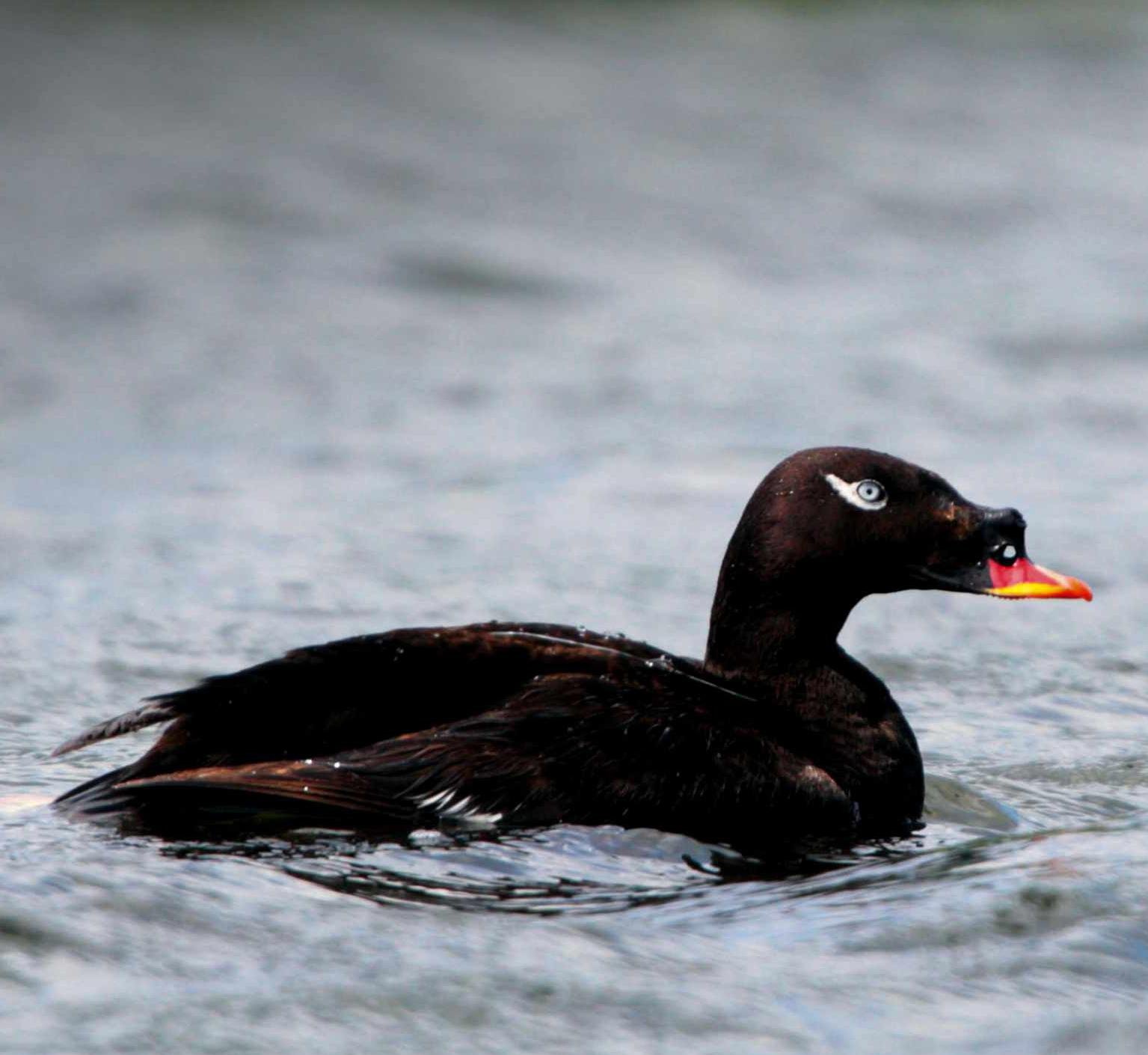VAGRANT SPECIES DIARY
Stejneger’s scoter, Firth of Forth

THE FIRTH OF FORTH JUST EAST OF Edinburgh is an important wintering area for velvet scoter, one of our scarcer sea ducks, that visits from its breeding grounds in Scandinavia and West Siberia. But recently, sharp-eyed observers have found that the local flocks they watch regularly have included some close relatives of the velvet scoter from further afield.
When velvet scoter was ‘split’ by taxonomists a few years ago into three species, which included the distinct North American and East Siberian forms – white-winged and Stejneger’s scoter respectively – interest in these ducks increased. The subtle differences were quickly learned by birders who found that the two newly recognised species were occurring sporadically in northern Europe as rare vagrants.
The UK recorded its first white-winged scoter in Aberdeenshire in 2011 and perhaps another three have occurred since, the most recent returning to the Firth of Forth for several successive winters. This winter has produced not only the expected returning white-winged, but also an adult drake Stejneger’s scoter – a UK first. By January 2023 the Stejneger’s scoter was no longer seen. However, around the same time as the white-winged appeared in Scotland, Ireland recorded its first white-winged in County Mayo.
Taxonomic splits like this tend to result in similar-looking species and these scoters are no exception, differing subtly in the head and bill profile, and bill colour of the adult drakes. With scoter flocks usually only viewable distantly from shore, credit is due to the spotters responsible for a remarkable run of rare sightings.